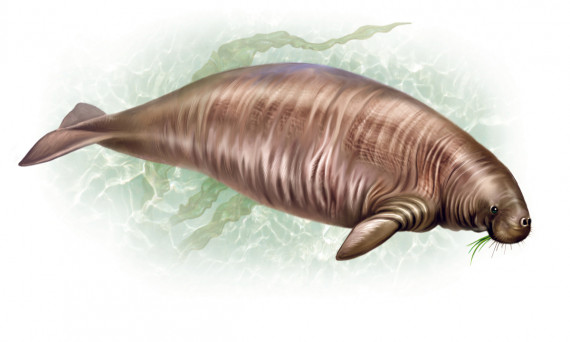Artem Nedoluzhko, the Director for Development at the EUSP Laboratory of Paleogenomics, and a group of researchers from a number of Russian scientific institutions have published a commentary article in the prestigious international journal Nature Communications (Q1, impact factor: 14.919). This work was in part a response to criticism of their article last year on the deciphering of the genome of the now extinct Steller's sea cow and estimating the time of its extinction.
Earlier, using the fossilized bone of a Steller’s sea cow found on the Commander Islands, a group of researchers led by Artem Nedoluzhko had assessed the population history of the species using the latest methods of genome sequencing and bioinformatic analysis. The analysis of the genome of the Steller's sea cow showed that the extinction of this animal began several hundred thousand years ago, much earlier than the arrival of the first humans in the Bering Sea area. This was a sort of justification for humanity and partially relieved it of responsibility for the extinction of this animal.
A group of Canadian researchers led by Kai M. A. Chan (Kai M. A. Chan) from the University of British Columbia presented their own arguments. Based on the established environmental models, the scientists suggested that the time of the onset of extinction of the species indicated by the Russian authors, was no more than the date of the final isolation of the Steller’s sea cow population in the Commander Islands (isolated from the main range: the coast of the Aleutian Islands and Beringia).
In his response to the criticism, Artem Nedoluzhko and his colleagues point out the impossibility of complete isolation of the Steller’s sea cow on the Commander Islands, relying on examples of migrations of related species: the dugong and the American manatee, as well as the annual migration of juvenile sea otters, which regularly move with the Alaskan current along the coast of the Aleutian Islands towards the Commanders. The authors suggest that for definitive conclusions about the demographic history of the species and to establish the causes of its extinction, genomic analysis of paleobiological samples of the Steller’s sea cow from other parts of its range is necessary.
More information about the results of the work and the discussion can be found on the website of the journal Nature Communications.
